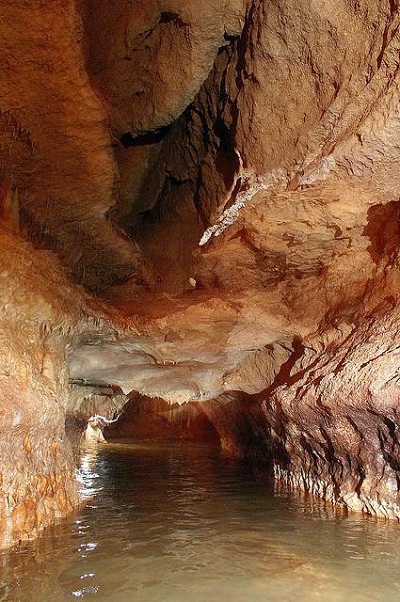⭐ BEST FERRY via CEBU & Countryside Tour: Our pick for Ferry Tickets and Countryside Tours.
- Bohol
- Bohol Travel
- Francisco Dagohoy
Francisco Dagohoy: A Slice of History and Myth

Francisco Dagohoy, born Francisco Sendrijas, is a native of Inabanga, Bohol. Not much is known of his parentage, birthday, or boyhood. Records only showed that he eventually became a Cabeza de Barangay or Barangay Captain of the town.
He derived his name from an amulet (“dagon” in Cebuano) he was wearing which the people believed gave him the charm of a gentle wind or “hoyohoy” and the power to jump from one hill to another and from one side of the river to the other.
He was believed to have a clear vision inside dark caves and be invisible whenever and wherever he wants. From his local alias, “Dagon sa Hoyohoy”, the name of Dagohoy was established.
Ready to explore the beautiful islands of Cebu and Bohol? Secure your ferry tickets today through 12go and start your unforgettable journey!

The Dagohoy rebellion stemmed not from a religious conflict but was ignited by forced labor, Spanish oppression, excessive tax collection and payment of tributes implemented by the Spaniards and the Jesuit priests at that time.
The rebellion was triggered when the Jesuit curate of Inabanga, Fr. Gaspar Morales, refused to give a Christian burial to Francisco’s brother, Sagarino, who died when chasing a man who abandoned his Christian religion.
The order to chase the man was given by Fr. Morales and so it infuriated Francisco no end when the priest refused the rites of burial.
Calling upon his fellow Boholanos to raise arms against their oppressors, the rebellion started from 1744 until 1829, roughly eighty five years. The rebellion even outlasted several Spanish Governor Generals and several missions.
The signal of the uprising was the killing of Father Giuseppe Lamberti, an Italian priest curate of Jagna on January 24, 1744. Father Morales was killed by Dagohoy shortly afterwards. Support for the uprising spread like wildfire throughout the island.
Francisco Dagohoy established a free government in the mountains of Danao. With an initial 3,000 followers, the number subsequently increased to more than 20,000.
He and his men defeated the Spanish-Filipino forces sent against him which lasted for 85 years. Even after his death, the mountain stronghold of Filipino patriots was not subdued and continued to defy Spanish power.
The Caylagon cave in Danao town became the headquarters of Dagohoy. It has many crystal-studded passages and an underwater route to dry land which is often the hiding place of Francisco and his men when pursued or when the Spaniards would search the cave.
 Dagohoy Cave
Dagohoy CaveTwenty Spanish governors-general tried to quell the rebellion and failed.
Only during the able leadership of General Mariano Ricafort (1825-30) was the rebellion subdued under Captain Manuel Sanz.
By August 31, 1829, the rebellion stopped.
Governor Ricafort pardoned 19,420 survivors who were allowed to live in villages located in the towns of Batuan, Cabulao, Catigbian and Bilar.
 Inside Dagohoy Cave
Inside Dagohoy CaveDagohoy’s Legacy
Dagohoy will forever live in the pages of Philippine history, not only as a brother and a heroic man, but as the leader of the longest Filipino uprising on record. His revolt lasted for a span of 85 years.
Dagohoy features in the Bohol provincial flag as one of the two bolos or native swords with handle and hand-guards on top. These two bolos, which are reclining respectively towards the left and right, depict the Dagohoy and Tamblot revolts, the two revolts in the annals of the history of Bohol.
Also, the town of Dagohoy, Bohol is named in his honor by the former Philippine Pres. Carlos P. Garcia, who was then still Vice President of the Republic of the Philippines. The high school in Dagohoy was also aptly called the Dagohoy Memorial National High School.
Top of Francisco Dagohoy
Ready to explore the beautiful islands of Cebu and Bohol? Secure your ferry tickets today through 12go and start your unforgettable journey!
recommended hotel booking
Book your stay in Bohol's breathtaking surroundings through Agoda and experience the ultimate relaxation
Top 25 Sights and Attractions in Bohol
- Chocolate Hills
- Tarsier Conservation Sanctuary
- Panglao Island
- Loboc River Cruise
- Hinagdanan Cave
- Balicasag Island
- Alona Beach
- Bilar Man-made Forest
- Blood Compact Shrine
- Baclayon Church
- Bohol Bee Farm
- Anda Beach
- Sipatan Twin Hanging Bridge Loboc
- Danao Adventure Park
- Sagbayan Peak
- Butterfly Conservation Center
- Clarin Ancestral House
- Dimiao Twin Falls
- Mag-Aso Falls
- Anda White Beach
- Lamanok Island
- Rajah Sikatuna Protected Landscape
- Dauis Church
- Can-umantad Falls
- Punta Cruz Watchtower
All Rights Reserved ©2024. Bohol Philippines Travel Guide
Address: Talibon, Bohol, Philippines